
The National is the national art gallery of Scotland. It is located on The Mound in central Edinburgh, close to Princes Street. The building was designed in a neoclassical style by William Henry Playfair, and first opened to the public in 1859.

Sir Patrick Geddes was a Scottish biologist, sociologist, Comtean positivist, geographer, philanthropist and pioneering town planner. He is known for his innovative thinking in the fields of urban planning and sociology. His works contain one of the earliest examples of the 'think globally, act locally' concept in social science.
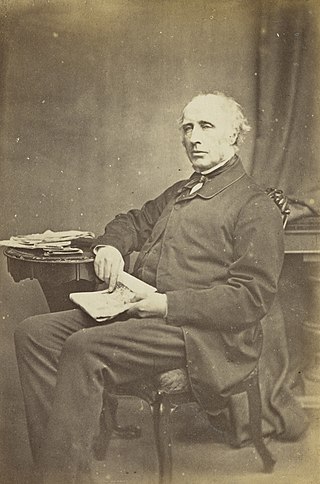
Cosmo Nelson Innes FRSE was a Scottish advocate, judge, historian and antiquary. He served as Advocate-Depute, Sheriff of Elginshire, and Principal Clerk of Session.
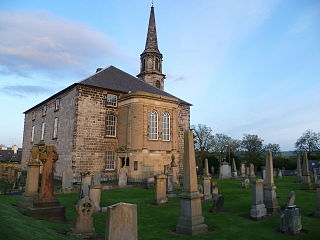
Inveresk is a village in East Lothian, Scotland situated 5⁄8 mi (1 km) to the south of Musselburgh. It has been designated a conservation area since 1969. It is situated on slightly elevated ground on the north bank of a loop of the River Esk. This ridge of ground, 20 to 25 metres above sea level, was used by the Romans as the location for Inveresk Roman Fort in the 2nd century AD.
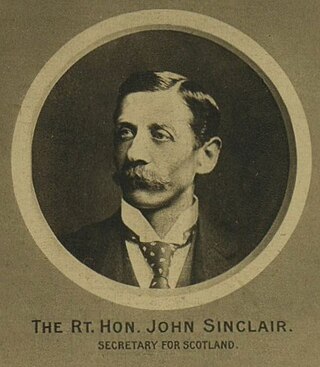
John Sinclair, 1st Baron Pentland, was a British politician in the Scottish Liberal Party, a soldier, peer, administrator and Privy Councillor who served as the Secretary of Scotland from 1905 to 1912 and the Governor of Madras from 1912 to 1919.
The phrase "Think globally, act locally" or "Think global, act local" has been used in various contexts, including planning, environment, education, mathematics, business and the church.
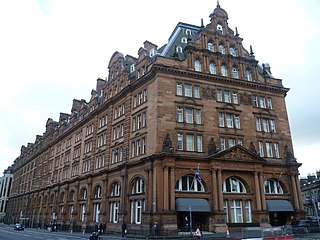
Princes Street Station was a mainline railway station which stood at the west end of Princes Street, in Edinburgh, Scotland, for almost 100 years. Temporary stations were opened in 1848 and 1870, with construction of the main station commencing in the 1890s. The station was closed completely in 1965 and largely demolished in 1969–70. Only its hotel remains, but it is no longer in railway ownership.

The College Des Ecossais was founded by Patrick Geddes in 1924 as an international teaching establishment located in Montpellier, in the south of France.
Sir Frank Charles Mears LLD was an architect and Scotland's leading planning consultant from the 1930s to the early 1950s.
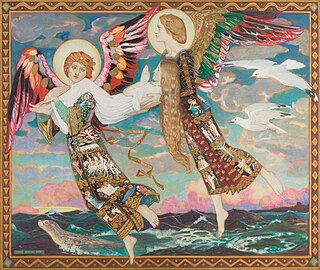
John Duncan (1866–1945) was a Scottish Symbolist painter. Much of his work, apart from portraits, depicted Arthurian legends, Celtic folklore, and other mythological subjects.
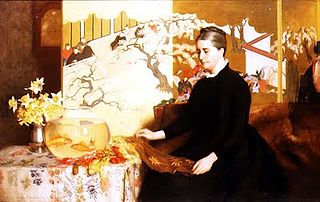
James Cadenhead was a Scottish landscape and portrait painter.
This is a list of the halls of residence at University College London in London, England.

Victor Branford was a British sociologist. He was the founder of the Sociological Society and was made an Honorary member of the American Sociological Society, now the American Sociological Association.
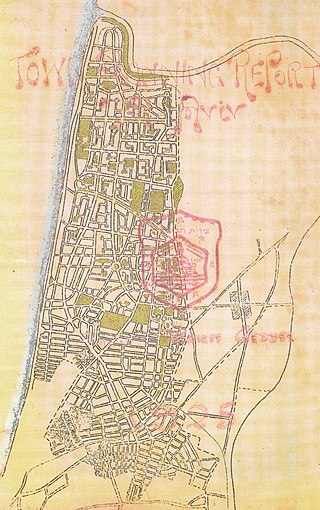
The Geddes plan for Tel Aviv was the proposal of Patrick Geddes presented in 1925. It was the first master plan for the city of Tel Aviv. The Geddes Plan was an extension to the north of the first neighborhoods of the city reaching to the Yarkon River.

Housing in Scotland includes all forms of built habitation in what is now Scotland, from the earliest period of human occupation to the present day. The oldest house in Scotland dates from the Mesolithic era. In the Neolithic era settled farming led to the construction of the first stone houses. There is also evidence from this period of large timber halls. In the Bronze Age there were cellular round crannogs and hillforts that enclosed large settlements. In the Iron Age cellular houses begin to be replaced on the northern isles by simple Atlantic roundhouses, substantial circular buildings with a drystone construction. The largest constructions that date from this era are the circular brochs and duns and wheelhouses.

Stewart Henbest Capper was a prominent architect in the Arts and Crafts style closely associated with Sir Patrick Geddes with much of his work mislabelled as Geddes'. Due to ill health he did not achieve much that he might have, and his contemporary Sydney Mitchell completed much of his most public works. His style cleverly mimics medieval and Renaissance details, and, as it sometimes includes either original or faked medieval date-stones, is regularly accepted as being several centuries older than its true age.
Charles Hodge Mackie (1862–1920) was a Scottish artist. He was a co-founder, and the first president, of the Society of Scottish Artists in 1900.
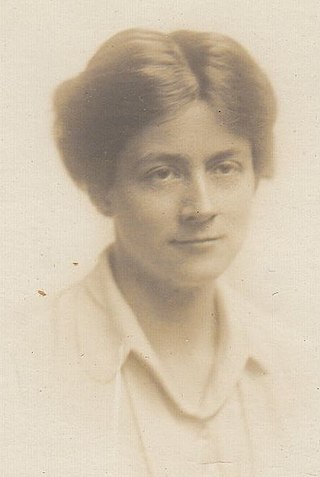
Norah Geddes (1887–1967) was a Scottish landscape designer.
Anna, Lady Geddes was an English social environmental activist, musician and partner in the work of Sir Patrick Geddes. During the marriage, she provided organizational and intellectual support to many of his projects, and they traveled extensively during their work together.

The Taking of Excalibur is an oil painting by John Duncan in 1897. It is currently placed at the City Art Centre, Edinburgh. This Dundee-born, Symbolist painter was known for his work on Arthurian Legends, Celtic folklore and various other mythological subjects.

















